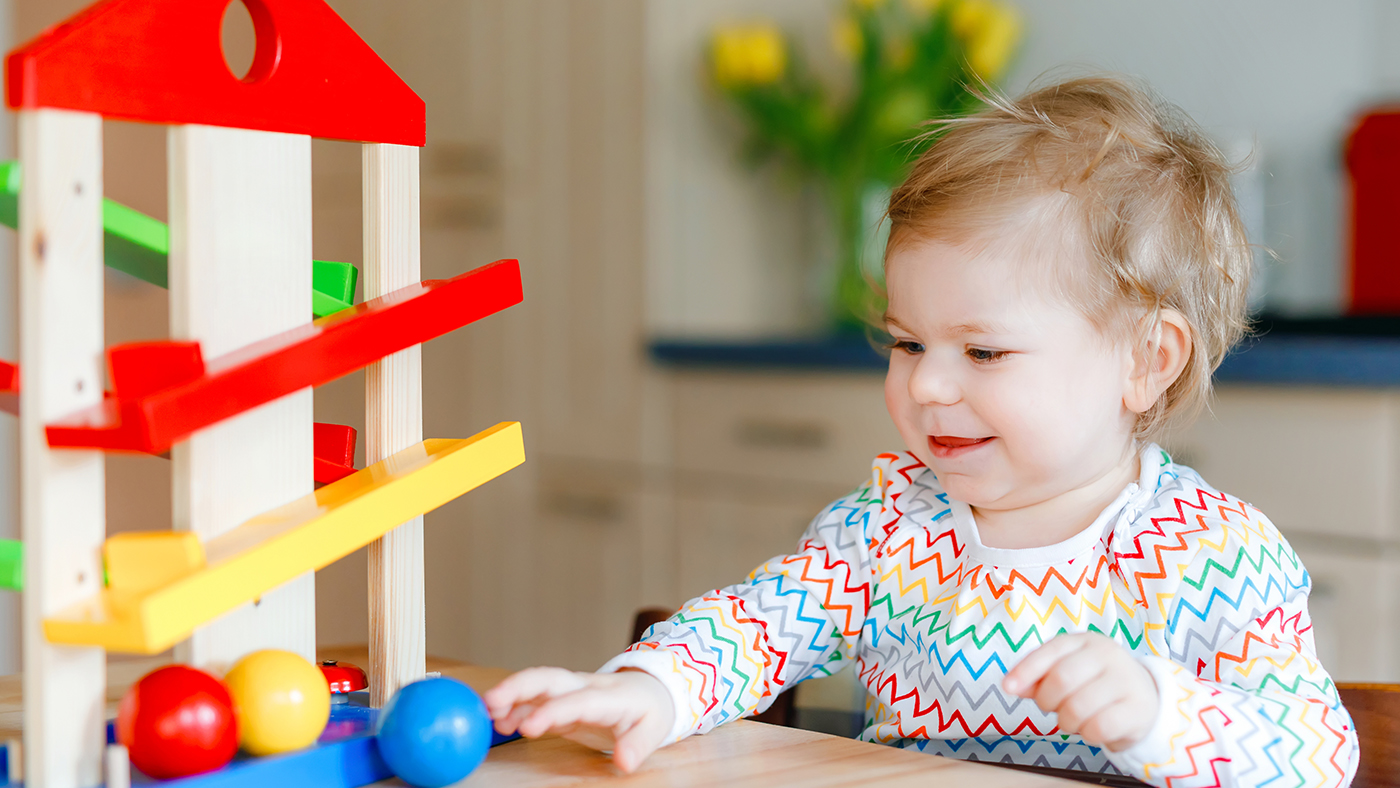Waits in Ready, Steady, Go Games

Your baby will have been watching you and working out the developing rules for interaction. By now, they are able to engage in serve and return styles of conversation, using their knowledge of eye contact, facial expressions, gestures, babbling, words, or touch to keep the conversation going. They are becoming more knowledgeable about the idea of play and may been enjoying interactive games such as peek-a-boo, and copying actions and noises when playing.
Word comprehension
The art of game playing is beginning to move forward a little now as your baby is able to listen more effectively and wait for very short periods of time. 'Ready, Steady, Go!' is an engaging game that is easy to learn and can be used in a wide variety of situations. The sheer familiarity and repetition of the three words, gives your baby a really good idea of what is being said. They'll also notice that something enjoyable usually occurs when the word "Go!" is said.
Memory
Playing repetitive games helps build your baby’s memory. They may demonstrate through their excitement that they can remember having a pleasurable experience when they heard the words ‘Ready, Steady Go!’, and something fun will occur each time the word ‘Go’ is said. Your baby can now draw on their memory and anticipate something fun. They now understand the word ‘Go!’ and can link the word to the game.
Learning the word and the action will also open up more language to your baby. The game can be played with a variety of toys, and by labeling these toys and describing what is happening, your baby is more able to connect words to objects, supporting new word learning. [1]
Social learning
When we talk about social learning, we simply mean that babies and children learn from observing the actions of others. Social games can be anything from peek-a-boo to action songs. When babies and young children play these games regularly they get to know that they should wait in anticipation for something to happen. When a word is associated with the anticipated act, such as ‘Go!’, in ‘Ready, Steady Go!’, the verbal announcement of Go! Gives babies a chance to connect the word and action.
When the game ‘Ready, Steady, Go!’ is played, your baby will be observing the behaviours expected. When they are more familiar with the game, they will be able to join in as a listener and potentially as a speaker. They will more than likely link the idea that words facilitate action and this can then produce a fun interaction with a familiar person.
Your baby will also be responding to the intonations in your words and the situation that they observe. [2] They have no influence over when the action ’Go!’ will occur, but they are relying on your tone of voice to 'read' when the action will actually happen. They're demonstrating that they understand the scenario and can predict when the activity will take place. You'll be able to extend their waiting time for longer as they become more accustomed to the concept.
Building forms of communication
When playing this game, your baby will gain a new powerful communication strategy. They will use their natural gestures, and possibly vocal forms, to anticipate the action in a familiar context. [1] The word ‘Go!’ expresses meaning and allows your baby to develop a means of requesting an action to happen. By playing ‘Ready, Steady Go!’ you have provided your baby with a framework for a verbal routine and this is helping to secure their understanding of intentional communication. [1]
You may find your baby trying to vocalise the words ‘Ready, Steady, Go!’, or ‘Go!’.This further demonstrates that they are starting to understand how to intentionally join in with communication. They have learned there is a vocal pattern linked with the way the words ‘Ready, Steady, Go!’ are produced and this has given them an understanding of how to link a vocal pattern with particular meaning. [1]
What Next?
Your baby will begin to learn more about exchanges in conversation and in turn-taking games. As their understanding of the game increases and their language develops, your baby will be able to take the lead in this game.
References:
[1] M.M. Vihman. (2014). Phonological Development. The First Two Years, 2nd Edition. Wiley Blackwell
[2] M.M. Lewis,(1936). Infant Speech: A Study of the Beginnings of Language. New York: Harcourt, Brace. Reprinted, 1975. New York: Arno